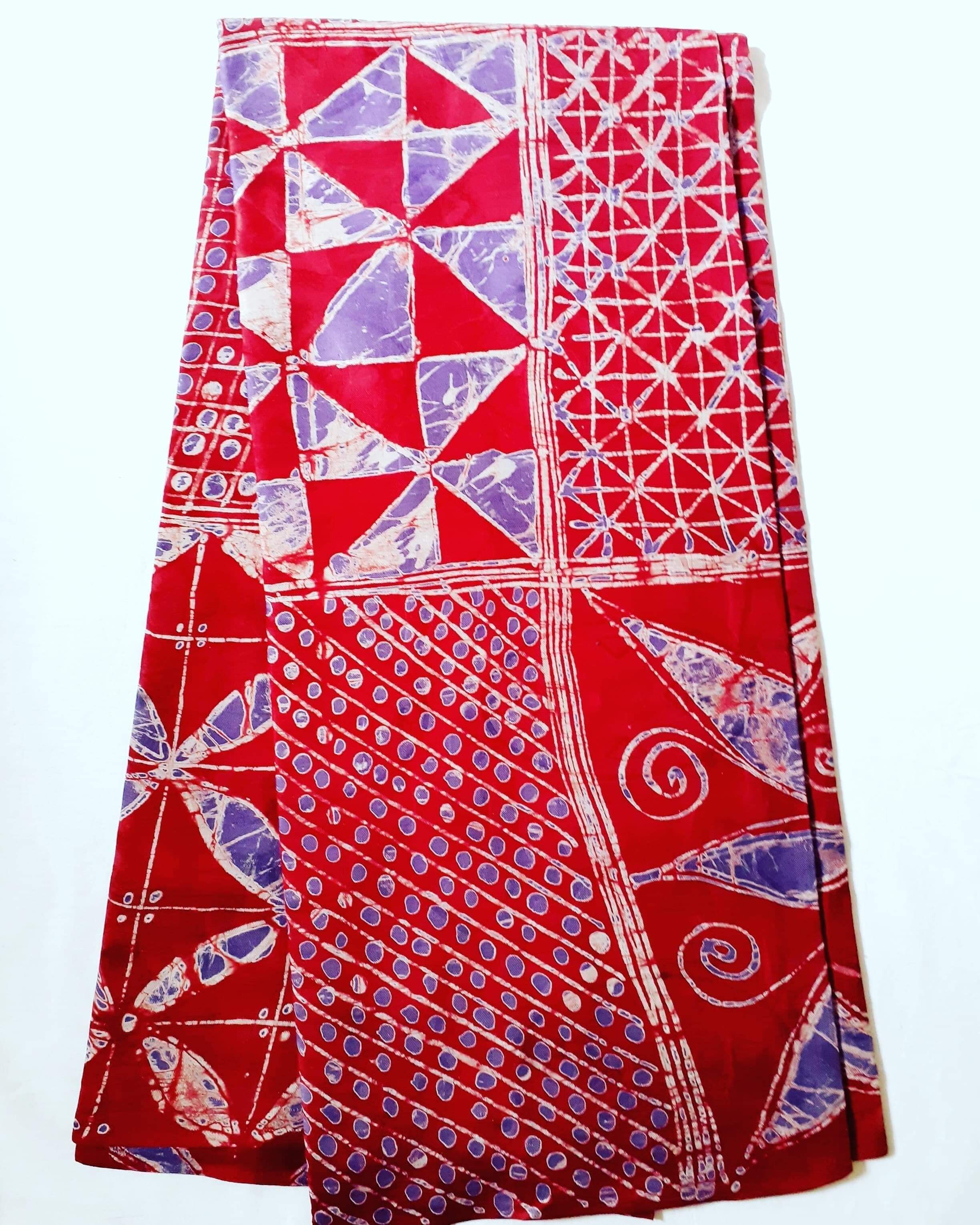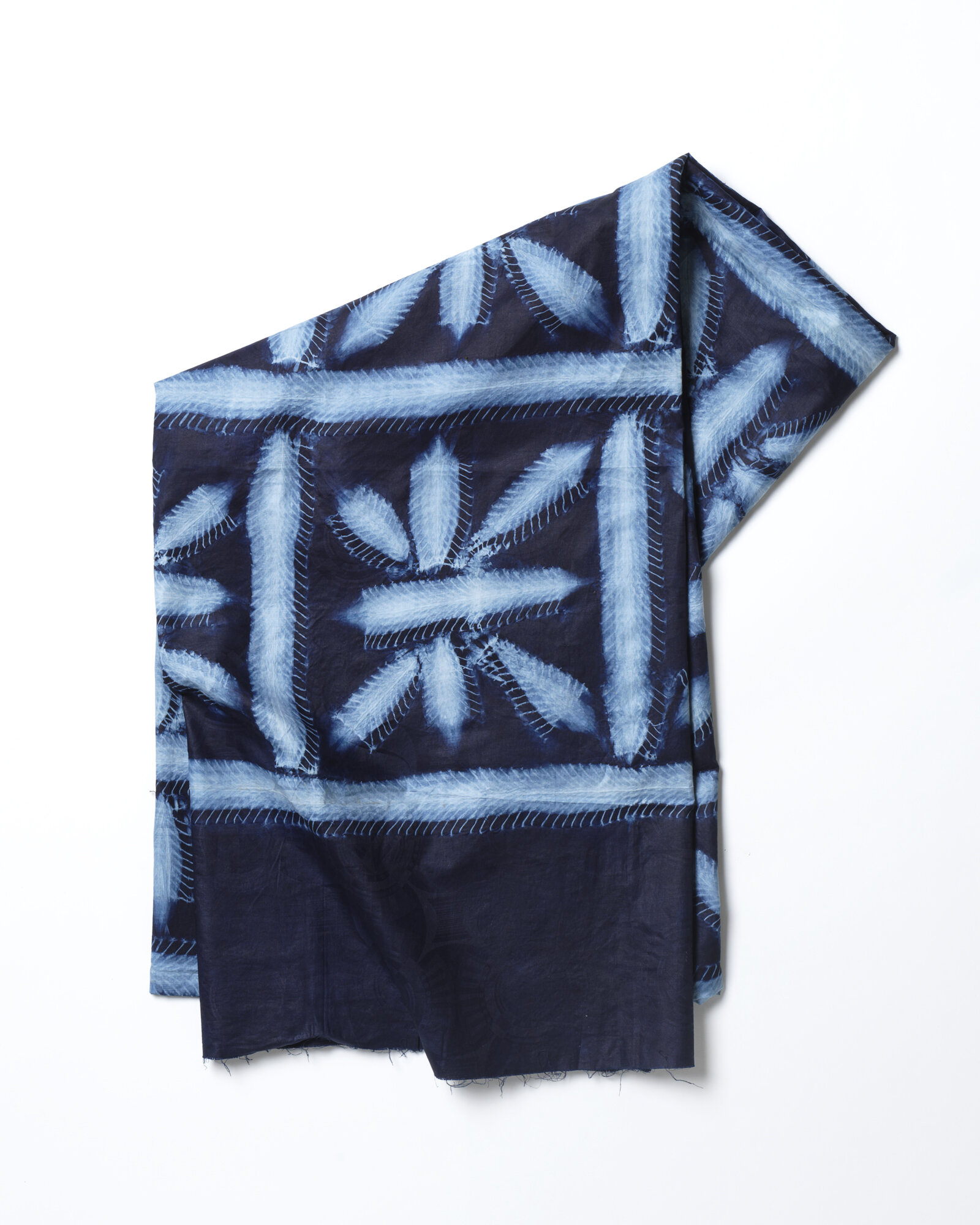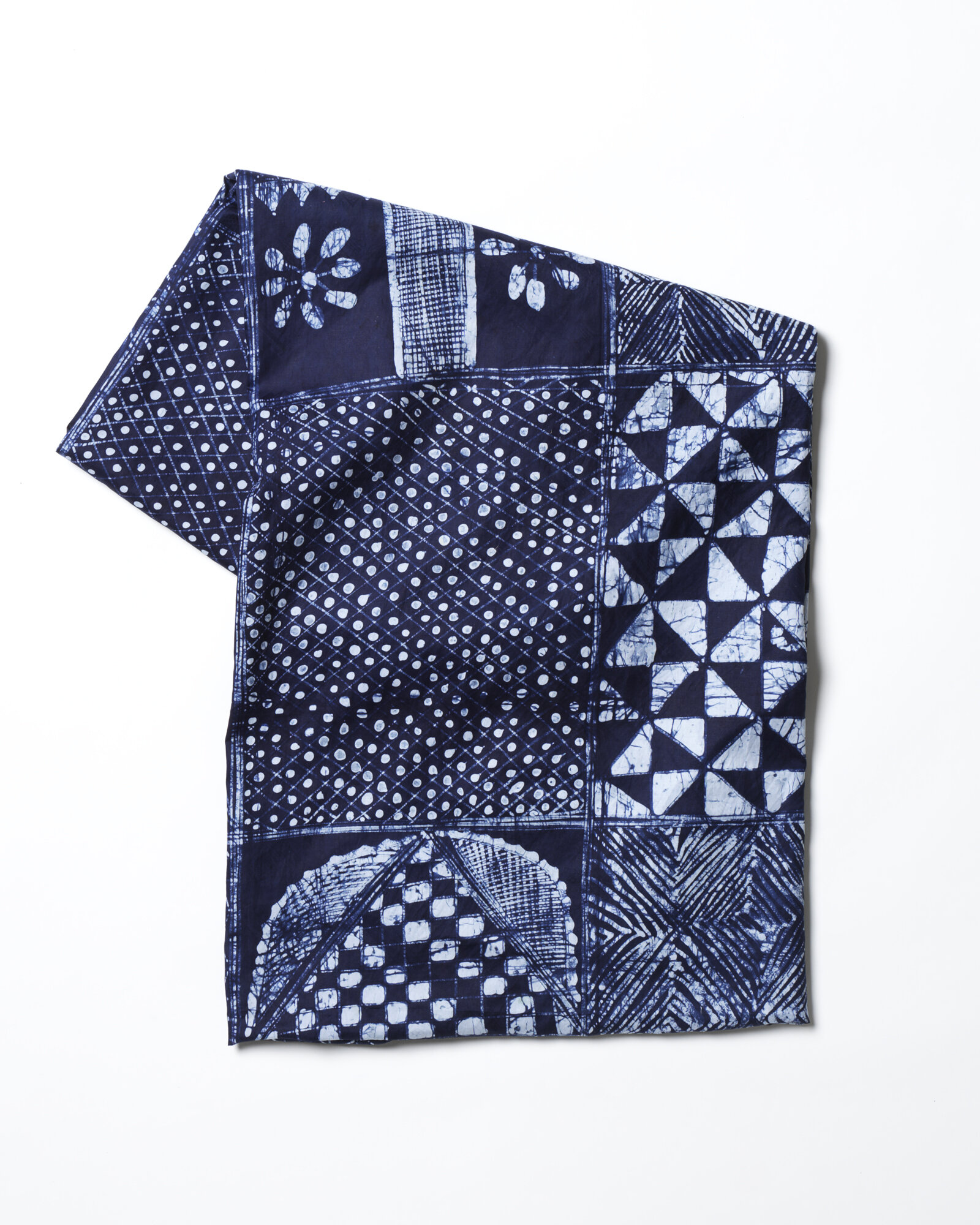
Indigo Is The Color Of Love
Gasali Adeyemo
I am the third born of five from a small rural village, Ofatedo, located in Osun State Nigeria. My mother is a trader and my father, a farmer. Although my family was rich in spirit and culture, we were poor in capital and I sponsored my own education throughout my years at St. George Elementary and Ido Osun High School.
From a Very young age, I realized my artistic potential and I would attend social gatherings, such as weddings, naming and burial ceremonies, and other cultural parties offering to sketch portraits of the guest, for a small donation. My sketching career combined with long, hard days working on the village farms provided adequate income to successfully complete my academic education through high school.
At this point, my attention turned to improving upon my artistic potential. I discovered the Nike Center for Arts and Culture in 1990, where I remained for a total of six years. The first two years of my experience at the Nike Center was spent mastering the arts of batik painting on fabric, indigo dyeing, quilt making, embroidery, appliqué, and batik painting on rice paper. During the following four years, I spent long days teaching these skills to incoming students at the Nike Center.
Eventually, the popularity of the Nike Center grew and hundreds of people came to Osogbo, Nigeria from all over the world to study and enrich their knowledge and understanding of the arts and culture of the Yoruba people. I spent much of my time conducting workshops and training these people in the crafts of my culture.
In 1995, my long years of service and dedication to the Nike Center paid off, and my artwork was exhibited in Bayreuth, Germany alongside the work of five other artists from Nigeria. My work made quite an impact, and many people traveled to Osogbo looking for the artist named Gasali. People who were exposed to my work later commissioned me to do quilt work and other pieces and my artistic career truly began to bloom.
In 1996, the opportunity arose to travel outside of Nigeria for the first time in my life. A woman named Karen came to Osogbo, Nigeria through an exchange program from America. We met and did workshops together. Impressed with my work, she invited me to come to the University of Iowa to do a series of exhibitions and workshops. Once there, the Octagon Gallery in Ames, Iowa took notice of my work and offered to exhibit it. I was also invited to work with a group of teenagers doing storytelling and art workshops to share with them the traditions of my own Yoruba culture.
These experiences in Iowa opened the door to greater opportunities. I have traveled the world conducting more workshops and exhibitions. My recent workshops include the World Batik Conference, Cross Culture Collaborative Inc., Snow Farm, and Fiber Arts Center. In the future, I plan to continue to travel worldwide, sharing the arts and culture of the Yoruba people of Nigeria. I currently reside in Santa Fe, New Mexico.

Gasali Adeyemo on Designing the Batik Fabrics in “The Woman King”
WORKSHOPS 2024
I teach the traditional Yoruba techniques of Batik, Adire Eleko and Tie-Dye. Students learn the meanings and history behind the traditional designs as well as how to prepare their own indigo vat and cassava paste resist. Please email yorubaindigo@gmail.com for information and to schedule a workshop.
January 16-19, 2024
Aya Fiber Studio in Stuart, FL
Traditional Yoruba Batik with Multiple Colors Workshop
June 21-23, 2024
Praxis Fiber Workshop in Cleveland OH
Traditional Yoruba Indigo Workshop & Public Demo Day
Praxis Fiber Workshop - Home
July 17-21, 2024
Sanborn Mills Farm in Loudon, NH
Traditional Adire Eleko & Tie-dye with Indigo Workshop
August 5-9, 2024
Touchstone Center For Crafts in Farmington, PA
Traditional Adire Eleko & Tie-dye with Indigo Workshop
August 11-16, 2024
Snow Farm in Williamsburg, MA
Traditional Yoruba Batik with Multiple Colors Workshop
Traditional Yoruba Batik with Multiple Colors – Classes – Snow Farm:
September 19 - 23, 2024
Cultured Expressions Sewjourn in Santa Fe, NM
https://www.culturedexpressions.com/
October 27 – November 2, 2024
John C. Campbell Folk School in Brasstown, NC
Traditional Yoruba Batik with Multiple Colors Workshop
https://www.folkschool.org










The New Selection Is Here.
( Gasali’s Choice )
These are the brand new fabrics that Gasali has hand crafted from scratch. Because of the amount of craftsmanship and time it takes in each of these pieces. He is only offering them in a limited supply. If want to add one of these rare pieces to your collection, email Gasali at YorubaIndigo@gmail.com to get yours today.


































Indigo
Indigo has been used as dye in Africa for a very long time. I use indigo in my work because it is a natural dye and because it has a long history in my culture. The Yoruba name for indigo is “elu”; it is the traditional dye use by my tribe. We use indigo for medicine as well as a dye. When I had an upset stomach as a child my mother would make me a tea from the young leaves of the indigo plant. Indigo is also painted on houses to prevent sickness from entering.
Indigo is the color of love. It is what we wear at celebrations such as weddings and naming ceremonies. Also, when someone dies we use indigo cloth to show how much the person is going to be missed. The husband or wife, whichever is still living, wears indigo for at least 8 days after the death.
Indigo is an organic substance, it comes from the indigo plant which grows wild in Nigeria. During the rainy season the leaves are harvested and then pounded in a wooden mortar. After we pound them then we form them into little balls and let them dry in the sun. The indigo is dried and stored in the ball form because it has a short season and we want to make sure there is indigo to use year round.








